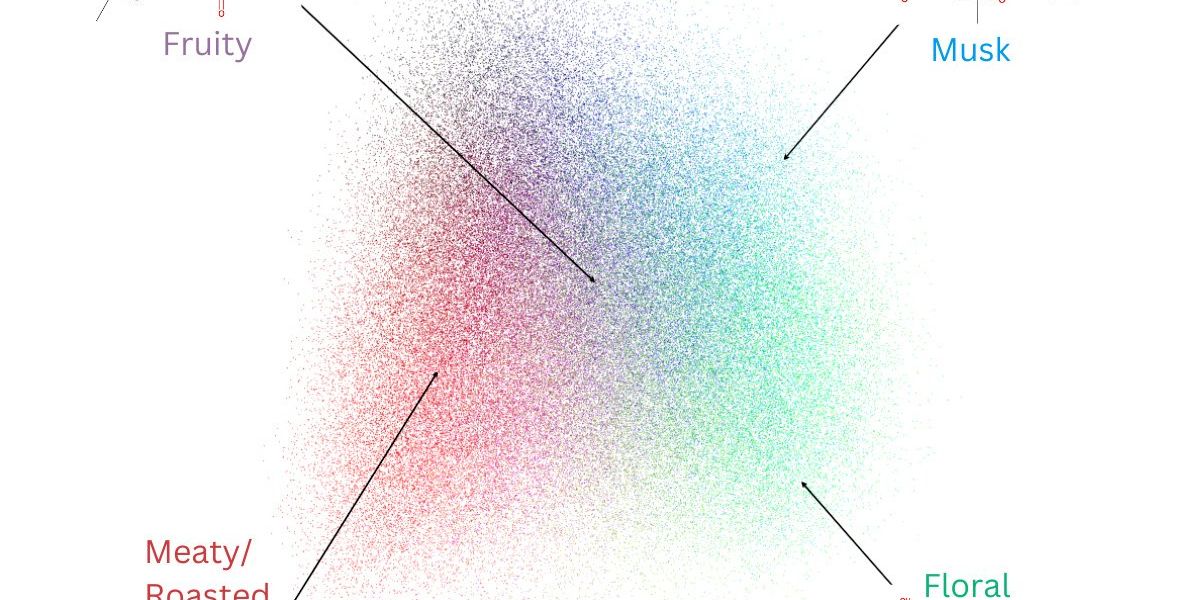

Sensory sciences have come a long way in explaining how some physical phenomena—a particular wavelength of light, for example, or a column of air vibrating at a set frequency—correspond to a typical perceptual experience. The sense of smell, however, has proven elusive. Until recently, there was simply no way to take the physical properties of a compound or the structural formula of a molecule and have any sense of what it might smell like.
Using a type of deep learning algorithm called a graph neural network, researchers have built a model that maps chemical structure to odor descriptors. The model has successfully predicted how a panel of humans would describe new smells, and it could be an important step along a long path towards digitizing smells. The work is described in a study published 31 August in Science.
“This paper is a milestone in predicting scent from chemical structure of odorants,” said Michael Schmuker, a professor of neural computation at the University of Hertfordshire who was not involved in the study. Although scent maps should be useful and the work “presents a leap forward,” he said, the nose-tingling possibilities it suggests, such as sharing smells over the Internet, will require much more work.
An abstract rendering of Osmo’s odor map showing olfactory relationships among molecules.
The model used a specific type of graph neural network called a message passing neural network. It was trained on a combined fragrance industry dataset of over 5,000 molecules with their structures converted into graphs and tagged with professional odor notes. Part of the research group worked at Google when the work began, and a few have since formed an offshoot company, Osmo, in January 2023, supported by Google Ventures, Alphabet’s venture capital arm.
“The predictive power of graph neural networks allowed us to do this work,” said co-author Alex Wiltschko, the CEO of Osmo.
In the long run, Osmo seeks to digitize smell in the same way that images and sounds can be recorded and transmitted. Full-fledged scent digitization would help develop new ways of producing or analyzing scents, leading to a wide range of new products and technologies, such as medical tests, treatments, or prostheses.
The model produced a spatial representation showing the similarity of the smell descriptors applied to different molecules. With more than 250 dimensions, the model is more complex than similar representations for colors, for example. Given only the chemical structure in the form of a graph of a novel molecule—that is, anything not included in the training set—the model could place it within the map, essentially predicting how a smell might be described. The principal odor map, as the team called it, is unprecedented for the sense of smell. “This principal odor map is the first step towards actually giving computers a sense of smell,” said Wiltschko.
The researchers are well aware of the subjectivity and individuality of the sense of smell. “The tricky thing about talking about how the model is doing is we have no objective truth,” said co-author Joel Mainland, a neuroscientist with the Monell Chemical Senses Center and the University of Pennsylvania. Mainland is now a scientific advisor to Osmo.
To validate the model’s performance, evaluations of 400 novel molecules were compared to the ratings of a 15-person panel trained to recognize 55 odor labels. The training reference samples were a mixture of pantry staples, supermarket treats (such as a green apple Jolly Rancher for “apple”), and specially procured scents. The “animal” label was taught with a vial of horse sweat. “It has a fantastic smell—really complex and interesting,” said Mainland.
The performance wasn’t flawless, but 53 percent of the time the model was closer to the average panel evaluation than the median panelist. In other words, Mainland explains, replacing one panelist with the model improves the group description.
Schmuker was part of a group of scientists who, independent of the original research team, reproduced the model and principal odor map based on a pre-print version of the study. They have made their project openly available.
Areas of further research include smell intensity; mixtures and concentrations of multiple basic scent molecules; digitizing real-world smells when molecular structures aren’t a given; and improving descriptive power.
The model was run on Nvidia’s Tesla P100 GPUs. While the GPUs are relatively powerful, Mainland compares the current detail of smell labeling to 8-bit graphics. Panelists described one molecule as “sharp, sweet, roasted, buttery.” A master perfumer, when consulted on the same smell, wrote: “ski lodge; fireplace without a fire.”
Reference: https://ift.tt/1098xmM
No comments:
Post a Comment